AMPL depositors complain of frozen funds on Aave
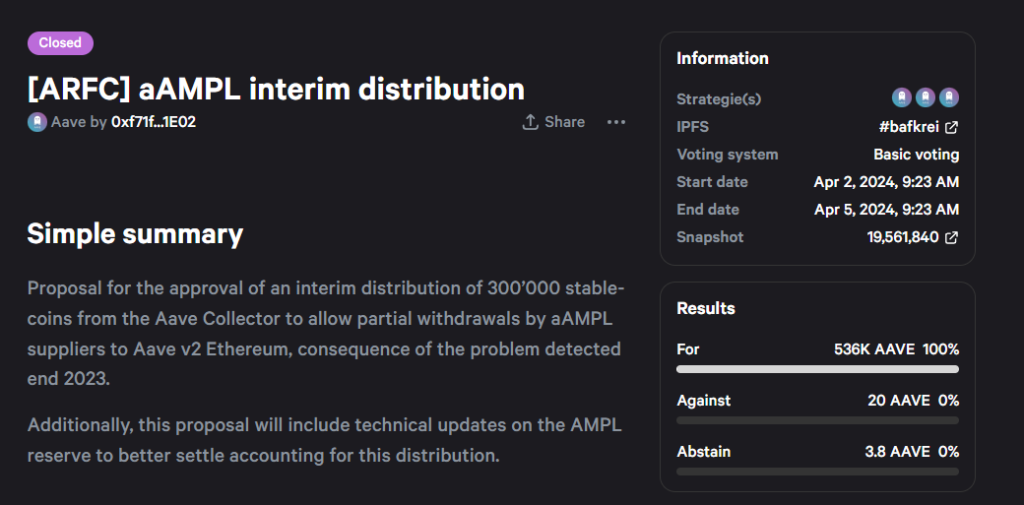
The AMPL pool on borrowing and lending protocol Aave suffered a liquidity crunch in December due to a contract bug, and DAO participants continue to debate how to properly compensate investors.

Depositors of Ampleforth’s AMPL stablecoin are complaining of frozen funds on popular decentralized finance (DeFi) borrowing and lending protocol Aave due to a lending pool shortfall. The issue, which has left AMPL depositors unable to withdraw their assets from Aave, has persisted since December 2023. Other DeFi pools on Aave are not affected by the problem.
AMPL is a stablecoin designed to track the 2019 value of the U.S. dollar adjusted for inflation. The protocol increases or decreases the number of tokens available based on whether its price matches its dollar target.
In November 2022, Aave became the victim of an alleged market manipulation attack against its Curve (CRV) pool. The attack failed to net any profits for the attacker, but it led to $1.6 million of bad debt for the protocol. In response, AaveDAO voted on Nov. 2, 2022 to freeze deposits and borrows for 17 different tokens, including AMPL.
The freezing did not prevent old depositors from withdrawing at that time, only blocking new deposits and borrows. However, in a December 2023 post on the AaveDAO forums, Bored Ghost Developing Labs (BGD Labs), a development team contributing to the Aave protocol, claimed to have discovered an additional problem preventing withdrawals. According to it, a bug in the pool contract had allowed it to be drained of funds, which meant there was no longer enough liquidity to process withdrawals.
In response to the issue, an Ampleforth representative suggested that AaveDAO should purchase AMPL tokens and distribute them to users as compensation, but Aave developers have countered with their own proposal to pay out stablecoins instead of AMPL. Aave developers have also asked the Ampleforth team to provide 40% of the compensation package from its own funds. At the time of publication, the Ampleforth team has not confirmed whether it will provide these funds, but it has stated it will continue to offer support to help resolve the problem.
On March 31, BGD Labs proposed paying depositors $300,000 worth of USD Coin (USDC). It claimed this was merely an initial distribution and that the remaining amount could potentially be paid out after further debate. Despite not completely resolving the debate, the proposal passed on April 5, with over 99.9% of votes in favor.
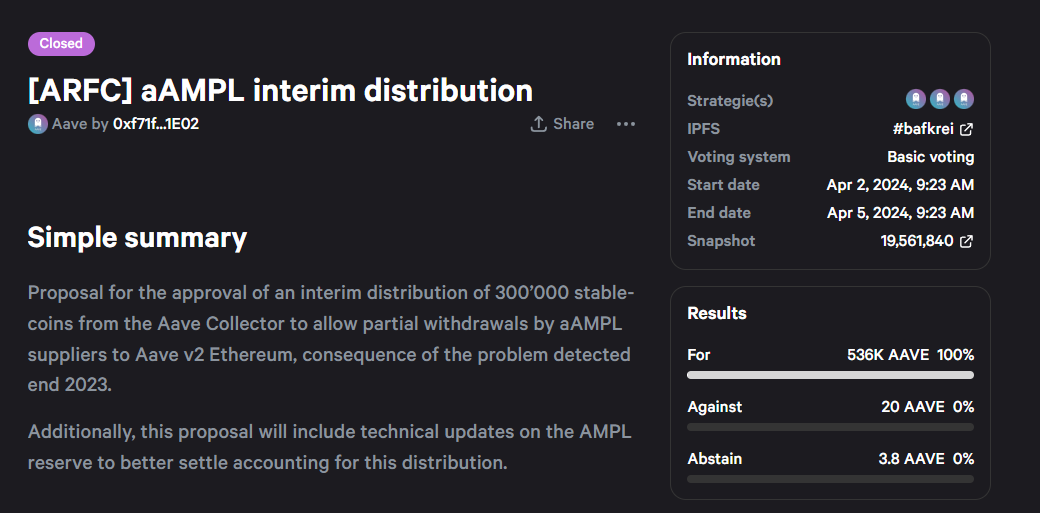
Related: Aave purchases 2.7M CRV to clear bad debt following failed Eisenberg attack
Aave developers discover liquidity problems for AMPL
According to Aave’s GitHub documents, when tokenholders deposit funds into the lending pool, they should receive an equivalent amount of “aTokens” in exchange. These aTokens essentially function as deposit receipts. As the pool receives interest payments, depositors should receive additional aTokens representing their share of these interest payments.
However, BGD Labs claimed that the AMPL pool contract is not working as intended: It has a flaw that is causing it to pay out more AMPL aTokens (aAMPL) than the amount of underlying AMPL available. As a result, there is not enough AMPL in the pool to allow depositors to withdraw. BGD Labs stated:
“The aToken supply of the asset appeared to be way more than it should, bigger than the sum of the variable debt plus available liquidity. […] The aAMPL supply is currently not representative of the claims over AMPL underlying. […] As the utilisation is 100%, no withdrawals can be executed, only repayments and liquidations.”
BGD Labs claimed that Ampleforth developers designed and wrote the contract, not AaveDAO contractors. It claimed to have reached out to the Ampleforth team and asked it to determine how much AMPL was owed to each depositor. BGD Labs asked depositors to be patient while the Ampleforth team attempted to come up with a solution to the problem.
Ampleforth proposes token buyback by Aave collector
On Jan. 31, Ampleforth developer Ahmed Naguib Aly, known simply as “Naguib” on the Aave governance forum, said the team was aware of the problem and working to solve it. “We have been coordinating with [AaveDAO risk managers] Chaos labs and Gauntlet to get to an effective resolution,” he wrote. On March 8, Naguib gave a detailed assessment of the problem and proposed a solution. According to him, the pool was facing a shortfall because some depositors had withdrawn before the excessive interest payments were detected. As a result, these early withdrawals had drained the pool of funds:
“More interest was credited to depositors than was charged from borrowers. This discrepancy has led to situations where some depositors were able to withdraw more than what should have been possible under normal circumstances. As a direct consequence, we’re now facing a liquidity shortfall, preventing current depositors from withdrawing their funds.”
According to Naguib, Ampleforth was unable to determine the proper amount of AMPL that should be paid out to each depositor at that time. However, he expected the team to determine these values by March 22.
Naguib noted that the Aave protocol owns some tokens within its “Aave collector” contract. Once the correct amounts of AMPL owed to each depositor became known, these tokens could be used to reimburse users, he suggested. An “upper bound” of 715,335 AMPL (approximately $1.3 million at the March 8 price) would be needed to fully compensate users. Naguib proposed that AaveDAO purchase AMPL on the open market using these reserves, which should then be distributed to depositors through a contract to be built in the future.
On March 17, Naguib withdrew his proposal, stating BGD Labs had disagreed with it. “BGD labs reached out to us that they don’t find the proposal to swap AMPLs and release it to holders to be an effective method to resolve the situation and they want to propose a different resolution,” he stated.
Aave developers propose stablecoin compensation
On March 21, BGD Labs and Aave risk management consultant Chaos Labs introduced a joint proposal to compensate depositors. The two teams estimated the shortfall at 533,973 AMPL (approximately $1 million at the March 21 price).
According to them, this amount of AMPL represented over 30% of the circulating supply. Buying this much AMPL would “be inefficient, given its relatively illiquid status and effectively altering the underlying economics of the asset.” Instead, they proposed that depositors should be compensated based on the average U.S. dollar value of AMPL over the four-month period that has passed since the Nov. 22 freeze. This would equate to $1.198 per AMPL or $639,700 total, which could be paid out in stablecoins such as USDC.
Chaos Labs and BGD Labs also suggested that Ampleforth should provide 40% of the funds to compensate depositors, with AaveDAO footing the bill for the other 60%:
“Considering that the problem is on a contract of Aave, but that the implementation was done by the Ampleforth team, we propose a 60% (Aave) 40% (Ampleforth) split on the total to be deposited on the smart contract for the distribution.”
This new proposal was criticized by many of the forum participants. Some critics claimed that it was unfair for depositors to receive stablecoins as compensation. “Aspects of the proposed resolution include paying aAMPL holders a below market rate amount of USDC instead of actual AMPL,” user Fiddlekins stated in a post. This is unreasonable, they claimed, because “repaying them [depositors] in USDC just transfers the burden of price impact to them if they wish to then rebuy AMPL with it, and denies them the ability to sell the asset they should have for its current elevated price if they don’t.”
Fiddlekins mentioned that AaveDAO sold 283,500 aAMPL of its reserves on Jan. 23, receiving $363,000 in exchange, which the user considered to be inconsistent with the view that AMPL is too high of a price to buy back. “Put bluntly: the DAO seems happy to sell low but not to buy high, and argues that lenders should bear the brunt of that,” they said.
Other critics took issue with the idea of a 60%/40% funding split between AaveDAO and Ampleforth. “Why would Forth DAO pay out it if there are issues on AAVE’s smart contract?” RomanPope asked. In response, QuantumEvolver argued that both sides were to blame. “The AMPL developers made a mistake in the smart contract from start, and they still cannot determine what exactly the mistake was. And AAVE is also responsible since they should have audited the smart contract before integrating it into the AAVE platform to make sure it would work fine.”
Related: Aave deploys DeFi protocol on BNB Chain
BGD Labs proposes $300,000 compensation plan
On March 31, BGD Labs made a new proposal: AaveDAO would pay out $300,000 in stablecoins to depositors, which it would obtain from its reserves held in the Aave collector contract. It said the proposal was necessary because “we don’t have any type of news from the Ampleforth team.” If Ampleforth wants to contribute to the compensation plan at a later date, “we expect communication in this forum,” BGD Labs stated, adding that such a contribution “technically will be perfectly doable.”
The proposal was confirmed by a vote of over 99% on April 5.
In its post revealing the proposal, BGD Labs claimed that the amount owed to depositors “will be more than 300’000 USD,” implying that even after passage, at least one more distribution will be needed to make depositors whole.
Ampleforth’s response
On April 7, Naguib posted a statement that attempted to explain Ampleforth’s position on the matter. He claimed the team became aware of the incorrect interest payments in May 2022. However, at that time, “the discrepancy was small, well below the AMPL reserve balance.” Aave was also planning to transition to Aave version 3 at the time, and the two teams agreed that the pool should be frozen until this transition was completed.
According to Naguib, they also agreed that AaveDAO should use its AMPL reserves to cover any shortfalls if it becomes insolvent before all depositors withdraw.
After this discussion, deposits and borrows were frozen for the AMPL pool on Nov. 22, 2022. But on Nov. 25, deposits were reenabled, leading to a greater shortfall for the pool over time. Then, AaveDAO sold its AMPL reserves on Jan. 23, 2023, which made covering the shortfall much more difficult for AaveDAO. According to Naguib, Ampleforth was initially unaware of both of these events.
When the Ampleforth team became aware that the shortfall had grown much larger, it suggested what it saw as a “simple and non-controversial resolution,” which was “to pick a date before the discrepancy started growing exponentially, and assume lenders were holding AMPL since that point.” This calculation would have allowed a compensation package to be produced quickly, and it could have been covered by some combination of AaveDAO reserves and Ampleforth funds. Naguib claimed that this proposal was made privately to the BGD Labs team.
BGD Labs reportedly rejected Ampleforth’s suggestion and instead asked it to calculate the amount owed based on off-chain simulations of AAVE platform behavior. This simulation process took longer but eventually led to the Ampleforth team’s March 8 proposal for AaveDAO to buy back AMPL to repay depositors.
Naguib stated that the Ampleforth team “will continue offering the necessary support for investigation and for BGD Labs in reaching a proposal that satisfies the community,” but also argued that BGD Labs should “take the lead to a resolution,” as the team believes “they [BGD Labs] are best positioned to perform this work.”



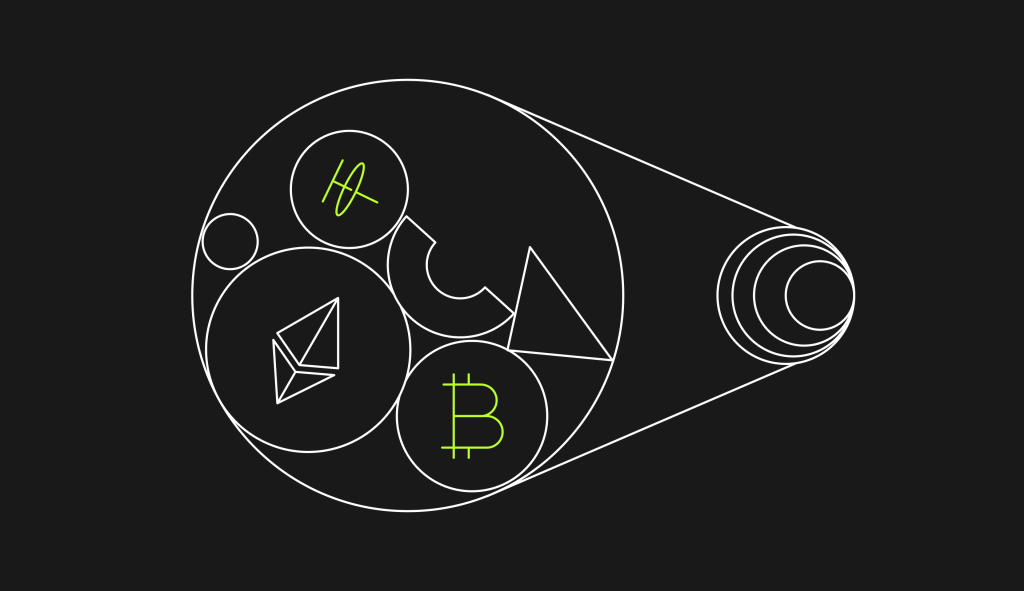
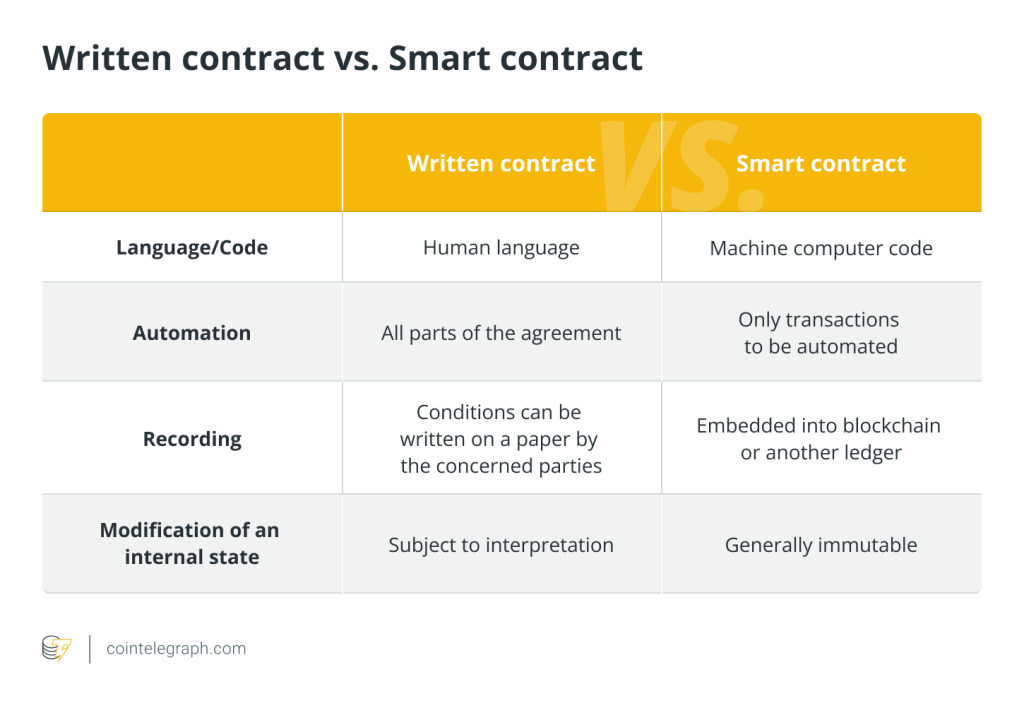
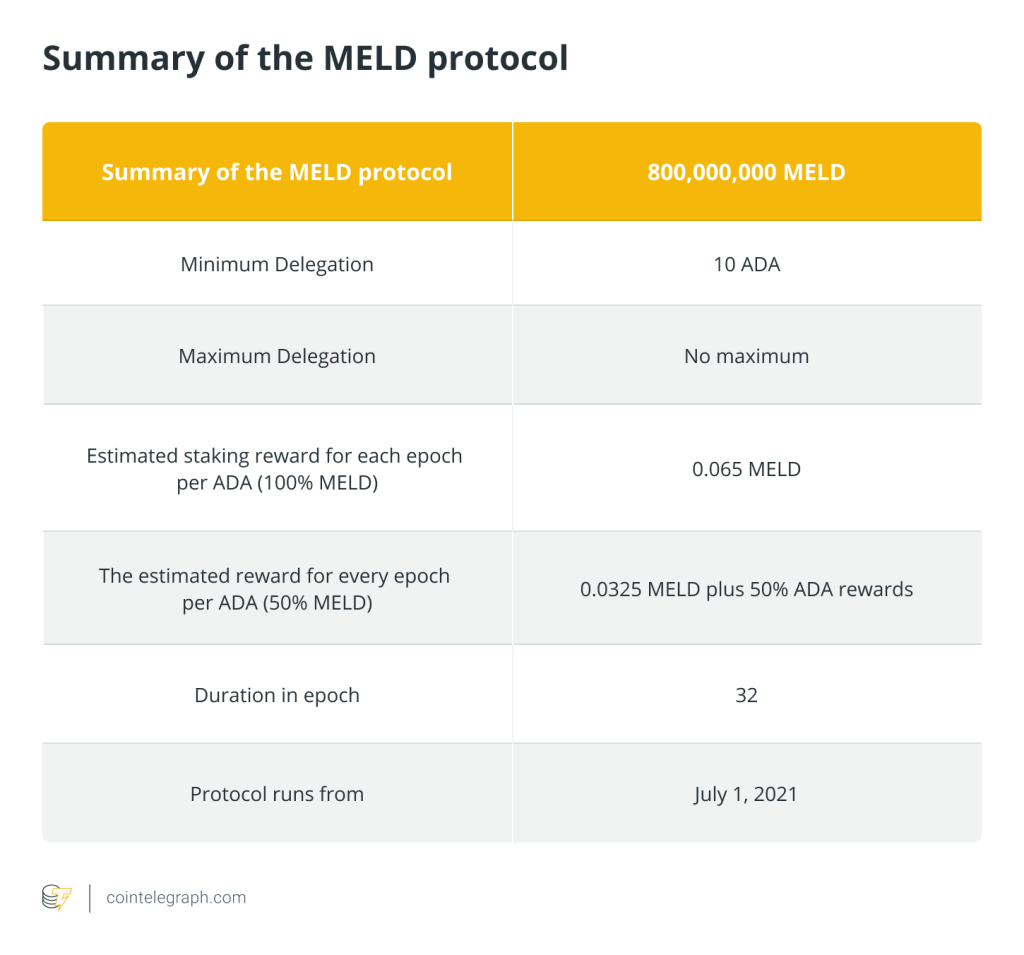
Responses